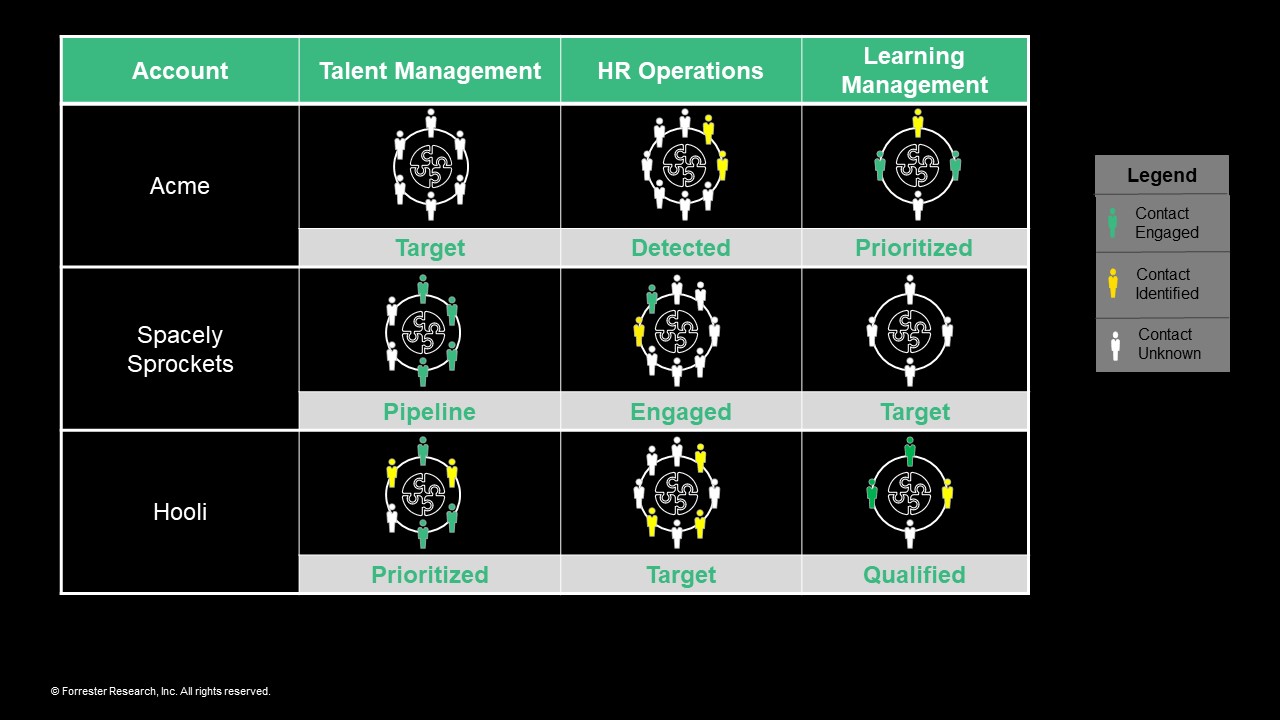Saying Goodbye To MQLs: Accounts, Buying Groups, Opportunities, Oh My! How Is It All Connected?
This blog post is part of the Saying Goodbye to MQLs blog series, where we answer your questions about making the shift from leads to buying groups and opportunities.
In today’s Saying Goodbye to MQLs blog, we want to level-set. After all, to get marketing, revenue development, and sales teams onboard with this new revenue process, we need to define the key elements of that process and the changes needed.
We’ve been throwing terms around, from buying groups and opportunities to buyer role and buyer persona, and the list goes on. So let’s talk about how they’re all connected …
What’s The Relationship Between Accounts, Buying Groups, And Opportunities?
Starting off easy here, we all know what target accounts are. These are the accounts that we believe we can engage with based on resources and budget. But remember, accounts don’t buy solutions.
So who are we selling to? Buying groups, of course! This is the team within the account responsible for finding a solution to solve a specific business problem. And every account will have some shape or form of a buying group. Buying groups are made up of multiple departments, roles, and personas. And yes, roles and personas are different.
- A buyer’s persona is an individual’s role in the company and often aligns to titles. As an example, we create personas for key titles such as the VP of HR. But it’s important to understand that the VP of HR could be involved in several different buying groups and opportunities and play different roles in each of these opportunities.
- Meanwhile, the buyer’s role references their role in the buying decision. The five common buyer roles are champion, influencer, decision-maker, user, and ratifier (a professional purchaser or negotiator). So the VP of HR may be the decision-maker in the talent management solution and be the champion for HR operations.
It’s important to identify the key personas and roles of members of the buying group.
Now, let’s talk opportunities. There are several common definitions of “opportunity.” Sales often thinks of the opportunity as a deal. Our view is that the opportunity can also be viewed as a container. It is the system entity or container that connects an account and buying group members to their respective buying signals and to solutions.
Many organizations offer multiple solutions, and opportunities become the container to hold all the insight we have about the buying group engagement and their interest in specific solutions. Therefore, multiple opportunities can exist within one account. Each of these opportunities is unique and may require different resource requirements and performance expectations, depending on the type of opportunity (acquisition, cross-sell, upsell, or retention).
But here’s where it gets interesting: Each opportunity has its own buying group attached to it. And within that buying group, members can have different roles or the same role in different opportunities (within the same account). That’s where program tagging comes in, helping us provide more context and identify what solution the buying group members are interested in.

What Is A Buying Group Profile?
A buying group profile portrays the expected size, roles, and associated job titles of buying group members for a given opportunity. Buying group size and roles can vary based on a number of factors but are often similar across segments. For example, the typical buying group for talent management solutions in enterprise customers in North America may have a common size (i.e., eight people) and makeup of roles.
It’s important that marketing, revenue development reps (RDRs), and sales align on the buying group profiles for each solution offering. Making this change will allow teams to see more quality opportunities and not a plethora of leads with no potential for a closed-won deal. The collective goal is to capture engagement from buying group members, align them to the relevant opportunity, and then collaborate across marketing, the RDR team, and sales to drive engagement across all buying group members. This shared focus on engaging with buying group members across the opportunity is a game-changer to drive marketing and sales alignment.
When marketing, the RDR, and sales all agree on the target accounts, opportunities, buying groups, and the buying group profiles, we’ve laid the foundation for really strong sales and marketing alignment! We have a shared vision of the goal and can define the roles and responsibilities across these teams to reach the goal.
Keep up with the Saying Goodbye to MQLs blog series here, and check out our next blog on how we can begin to operationalize the opportunity-centric revenue process. Haven’t seen your question come through yet? Send them here, and we’ll respond in future blogs.
